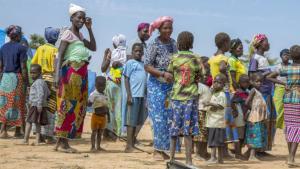The migration of persons represents one of the most important social phenomena of the late twentieth and early twenty-first centuries. Closely linked with migration is the rapid urbanization that is occurring in so many parts of the world. As migrants leave rural lifestyles seeking opportunities in cities, urban areas are growing at an exponential pace. Both trends have profound effects on family life, family relationships, and family practices. Policies and programs that support migration and well-planned and well-managed sustainable urbanization are closely related to the successful realization of the United Nations Agenda 2030 and the embedded Sustainable Development Goals (SDGs).
Migration
Migration is almost always associated with the desire to access better occupational, educational, and social opportunities more easily. Most of this mobility is, thus, associated with the rapid expansion of urbanization as individuals leave rural areas for cities which are perceived as providing increased economic and educational chances. Migration is highlighting the economic disparities within regions as well as the increasing inequalities between societies and is closely linked with the deepening processes of globalization (IOM, 2020). Those who are left behind in rural areas often have diminishing access to social services and educational programs as higherquality opportunities are increasingly only found in urban areas. Migration and urbanization also have very significant, often overlooked family dimensions: family members may have varied experiences depending on if they are the ones migrating or staying behind - which can lead to fragmented relationships. Families, however, can also benefit from the new opportunities that may accompany migration and urbanization.
 Welcome to the United Nations
Welcome to the United Nations
